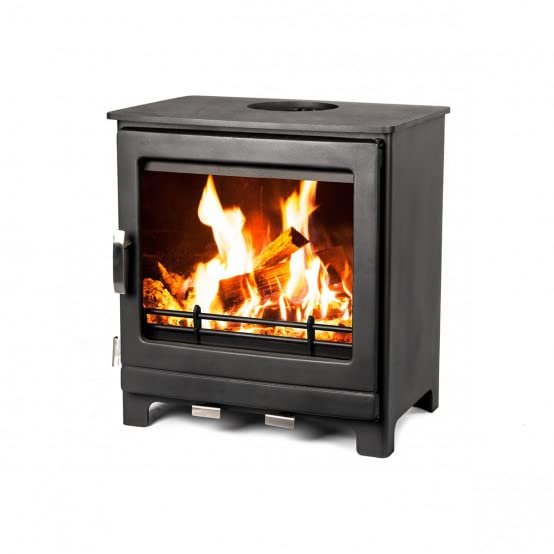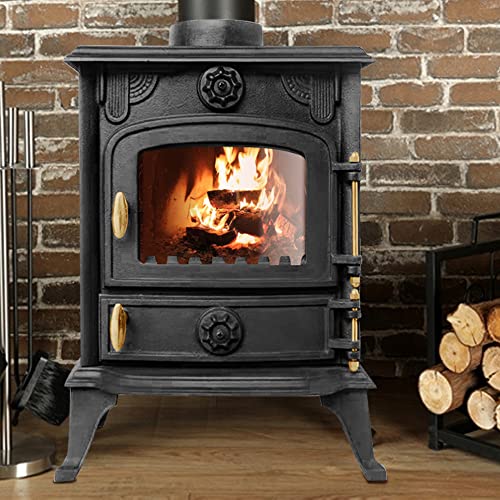Guide To Multi Fuel Boiler Stove: The Intermediate Guide The Steps To …
페이지 정보
작성자 Lucas 작성일24-08-20 22:50 조회6회 댓글0건관련링크
본문
 Multi Fuel Boiler Stove
Multi Fuel Boiler Stove12kw multi fuel stove fuel boiler stoves are made to burn a wide range of logs, smokeless fuel and coal. They can be linked to your current heating system to help you save money.
 When burning coal, the grate has to be removed in order for air to reach the fire from below. Some multi fuel stoves feature an asphan grate that is riddling to facilitate this.
When burning coal, the grate has to be removed in order for air to reach the fire from below. Some multi fuel stoves feature an asphan grate that is riddling to facilitate this.Energy Efficiency
A multi fuel stove can burn a variety of different types of solid fuel including peat and turf Briquettes, smokeless coal, and anthracite. They can also be used to burn logs. They are more versatile than wood-burning stoves because they can be used with a range of fuels.
Modern Ecodesign-compliant stoves are rated at an 80% or higher overall efficiency. They can assist in meeting the SAP energy requirements through the production of low CO2 emissions. In the UK the majority of homes utilize a wood-burning multi-fuel stove to warm the living space and central heating systems as the primary source of heating. This is usually supplemented by a secondary form of heating like convection or air hot water stove.
The overall efficiency of a stove is vital since it represents the amount of heat delivered to the house. It is not to be confused with the combustion efficiency which is the number that appears on the back of the stove. The efficiency of combustion is based on how efficient the stove performed in the laboratory test. It is not a measure of the efficiency of the whole system of stove, fuel and chimney.
Stove makers often refer to combustion efficiency and not System Efficiency on their marketing material but this is not true. System Efficiency is not a measurement of the performance of the stove in a laboratory test. It is a calculation that takes into account the total emissivities of both the stove and fuel in a home.
Note that the TE of a certain combination of fuel and stove is based on the amount of volatile matter present in the solid fuel, since it will determine if particulate-bound pollutants (e.g. The PM2.5, EC, and BaPeq pollutants are emitted by the fuel during ignition or are kept in the pyrolysis stage. When the volatile matter is held in the pyrolysis phase, it releases carbonaceous aerosols which are not effectively bound and thus contribute to the total emissivities.
Low Maintenance
In contrast to catalytic stoves that have to be monitored continuously Non-catalytic multi fuel stoves are designed to be easy to operate and require minimal maintenance. These models are cheaper and utilize a preheated combustion system to improve performance. They can burn a variety of solid fuels, including smokeless coal. They also have an air control primary that allows you to control the rate at the fire is burning. This allows you to achieve a more efficient and efficient fire with more flame distribution and lower emissions.
You'll need to replenish your stove every 10-14 hours, depending on the method you make use of it. You will also need to empty the ash pan regularly. If you are using a smokeless coal stove, then the ash must be swept away to keep it from blocking the air passages that are used for combustion, and starving the fuel with oxygen. This can be done using an easy tool that resembles pitchforks.
BTU ratings, which measure the amount of heat required to boil a liter of water, are a good indication of how powerful a multi fuel stove is. However BTU ratings shouldn't be the only spec you look at when looking at different models. Other factors, such as burner size and weight, can have a similar impact on performance.
Modern multi fuel stoves can be used with a large variety of liquid fuels, including white gas, isobutane, and kerosene. This makes them perfect for backpacking expeditions, especially in remote regions in which you may not find traditional canister fuel.
Multi-fuel liquid-fuel stoves typically come with a regulator that helps you manage the amount of fuel used. They are also more efficient than stoves that use canister fuel, and they perform well in cold temperatures as well as at high altitudes.
Some multi fuel stoves can even be used with wood and allow you to become more self-sufficient and less dependent on purchased fuel. It is important to keep in mind that using a inset multi fuel stove fuel stove that uses wood can result in more harmful emissions and is not recommended unless you've taken the appropriate precautions in place.
Thermostat Control
When it comes to multi-fuel stoves one of the most popular is a boiler stove. It's an excellent option for those who want the stove to heat their water as well as their living space. The boiler stove can do this by heating the hot water tank inside the stove itself, or it may be connected to a traditional central heating oil or gas system to help supplement its heat output. The ability to burn a variety of solid fuels is another reason why these kinds of stoves can be used in smoke-free areas which makes them a great choice for urban properties.
Modern stoves usually have a thermostat control that allows the user to adjust the amount of fuel being burned, which in turn controls the quantity of heat produced. This feature can help save money by ensuring the maximum amount of heat is generated from each fuel piece.
Boiler stoves can be used with a range of different fuel types, such as wood, peat and smokeless coal. The majority of multifuel stoves allow you to choose between different kinds of fuels when making an open flame. This is because different types of fuel require slightly different airflow for proper combustion.
Smokeless coal, for example, requires combustion air from below, and the majority of multi fuel stoves feature an open or partially open riddling grate in order to let air flow through. The grate must be riddled frequently to prevent the accumulation of ash, which could cause the fire to die.
All multifuel stoves, whether they are boiler stoves or not, are capable of transferring a portion of their heat to an ordinary hot water tank. The amount of hot water a stove can offer will differ depending on the model. However, generally they are able to supply up to eight standard radiators. Some models, such as the Stovax View 8, are able to achieve this with a stunning heat output of up to 4.9kW to the room and 8.2kW to the boiler - enough to heat the majority of standard domestic sized radiators inside a house.
Smoke-Controlled Areas: Suitable for this product
Multi fuel stoves are an excellent option for those who live in areas with smoke control since they can burn a variety of non-smoking fuels. You will save time and money by not having to carry or store logs or briquettes that aren't always available. The multi-fuel stoves are also more contemporary than their open-fire counterparts and are available in a variety of sizes that can be tailored to homes with various interior design schemes.
These stoves are DEFRA approved or exempt from being a solid fuel appliance and are tested for strict emission limits. This is especially applicable when burning "smokeless" fuels. These stoves are perfect for those who reside in a city that has a lot of smoke-producing structures. They will reduce the amount of black smoke generated by your heating system.
A DEFRA approved stove can be used with a range of solid fuels including smokeless briquettes and anthracite. However, certain types of fuel are not able to be burned in any way and it is illegal to use certain fuels unless you are in possession of an exemption certificate for smoke control.
This type of stove is able to accommodate oil and gas sealed heating systems or even underfloor heating, depending on the model you pick. They could also come with a system to allow them to be connected with solar panels or other renewable energy sources dependent on the specific model.
A multi-fuel stove has a window through which you can see the fire and the flue that draws and expel combustion gases from the appliance. There will also be an open fire grate that you can place your fuel on and the air supply to the flames is controlled by an adjustable slider positioned on the bottom part of the stove's door. Certain models also come with a secondary or tertiary air flow system that allows the pre-heated air from the secondary or tertiary into the combustion chamber at a height above the fuelbed. This helps reduce emissions by burning unburned hydrocarbons that are in the smoke before it is vented upwards into a chimney system.
댓글목록
등록된 댓글이 없습니다.




